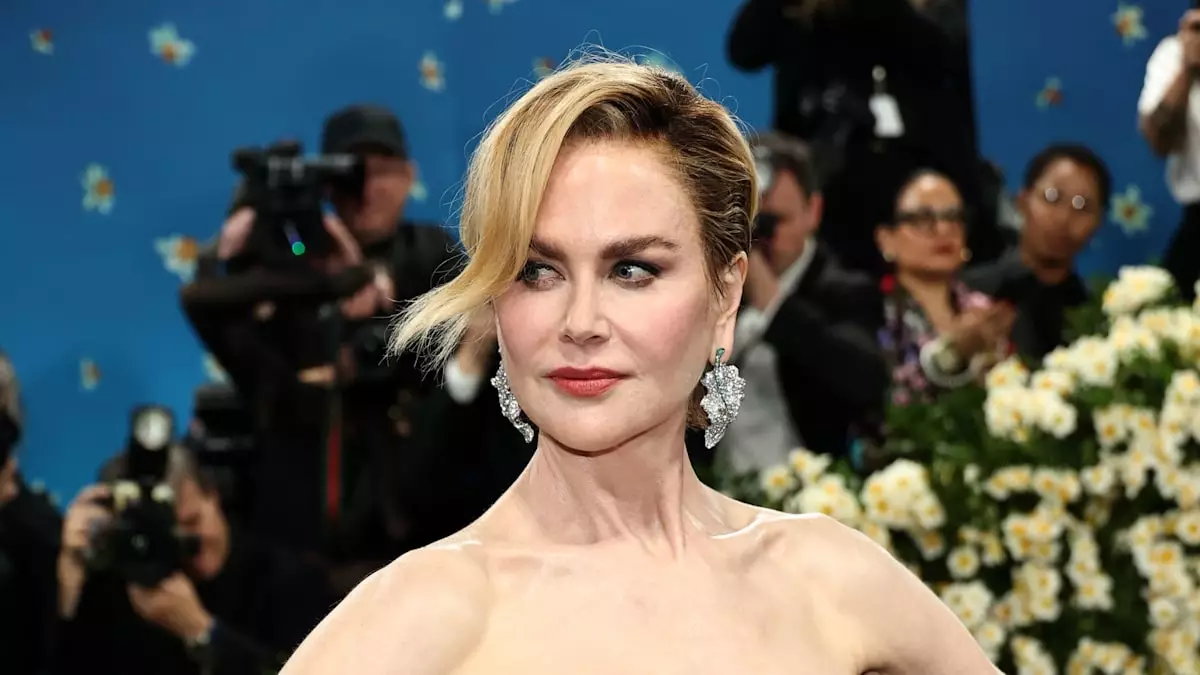Nicole Kidman has once again proven her status as a fashion icon, making waves on the red carpet with striking new hairstyles that reflect her evolving style. On a memorable Monday evening at the Met Gala, she set the internet ablaze with a dramatic transformation, showcasing an innovative hairstyle that had fashion critics and fans alike singing praises for her talented stylist, Adir Abergel. Known for her ethereal beauty and elegance, Kidman took a bold step away from her traditional long blonde hair, opting for a sharp chop that embraced a rich brunette base beneath her wispy blonde strands—an audacious nod to the historic themes of Dandyism.
The reception was overwhelmingly positive. Fans and observers were captivated by how Kidman took a fashion-forward approach aligned with the Gala’s theme of “Superfine: Tailoring Black Style.” This theme references the legacies of Black Dandyism, showcasing individuality, confidence, and elegance—a perfect backdrop for Kidman to introduce her audacious hairstyle. Abergel’s Instagram post detailing Kidman’s look was met with immediate approval, even earning a like from Kidman’s daughter Bella, signaling familial support for her mom’s daring change.
The ACM Awards: A Different Yet equally Stunning Look
Just days following her jaw-dropping appearance at the Met Gala, Kidman showcased another show-stopping hairstyle at the ACM Awards in Texas, where her husband, Keith Urban, was honored with the prestigious Triple Crown Award. At the event, Kidman stepped onto the red carpet confidently adorned in an all-black ensemble that featured a sleeveless leather top paired with tailored trousers and a layered black skirt. Her hairstyle was notably long and sleek, cascading elegantly down her shoulders, contrasting sharply with her previous look—a testament to her versatile style.
The connection between Kidman and Urban cannot be overstated. Presenting a united front at high-profile events, they embody a blend of fame, talent, and authenticity. Kidman’s fashion choices at the ACM Awards maintained the same high standards of elegance as her Met Gala appearance, yet offered another layer of artistry. The simplicity of her hairstyle and outfit celebrated both her personal style and supported her husband’s achievements, effectively embodying the adage that behind every great man, there’s a powerful woman.
The Conversation Surrounding Dandyism and Tailoring
Kidman’s commitment to honoring the theme of Dandyism at the Met Gala goes beyond just aesthetics; it resonates with deeper cultural implications, championing the cross-section of fashion and identity. During her interaction with Vogue, Kidman articulated her love for the “tailor-made” components that celebrate individuality. In her words, every piece of clothing should reflect not just the wearer but also the artistry of those who craft it. She beautifully conveyed how a seemingly simple detail, like a unique button, can transform an ensemble into a personal statement.
Dandyism, as indicated by Kidman’s fashion choices, challenges norms in the fashion world, redefining what elegance and masculinity can represent. Through her collaboration with Abergel, she not only pays homage to the greats of Dandyism but also merges their essence with contemporary fashion. The expression of creativity in tailoring serves as a reminder that fashion is not merely about trends; it’s also about personal narrative. Kidman’s appearance highlights how fashion intersects with history, identity, and the artistic expression of self.
The Power of Fashion and Its Cultural Significance
In today’s increasingly interconnected world, fashion plays a pivotal role as both a form of communication and a reflection of societal values. Kidman’s bold choices challenge superficial beauty standards while emphasizing the importance of cultural narratives threaded into fashion. Her actions resonate beyond mere visual appeal; they ignite broader discussions about representation, artistry, and personal identity within the realm of celebrity culture.
Through Kidman’s lens, we witness a profound respect for the history of fashion and its diverse influences. This conversation is profoundly significant at a time when cultural expression through clothing can evoke both solidarity and individuality. Kidman’s transformative appearances remind us that fashion is not stationary; it thrives on dialogue, adaptability, and innovation. Her willingness to experiment with her style signals an essential evolution in celebrity fashion, where icons like Kidman embrace not only their personal tastes but also the historical contexts that inspire new narratives.

